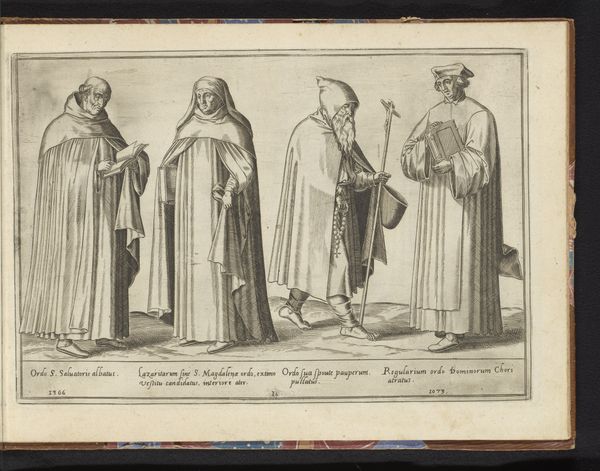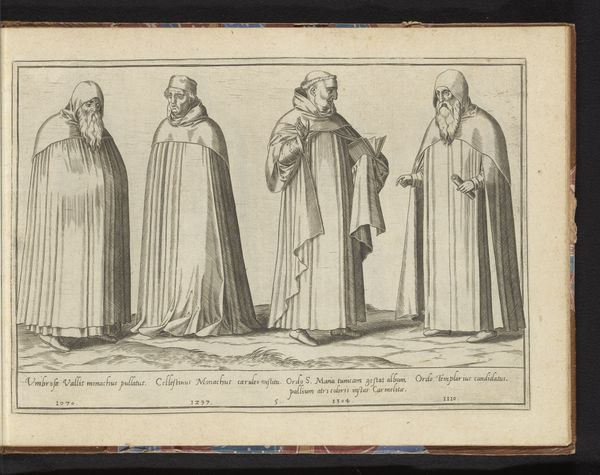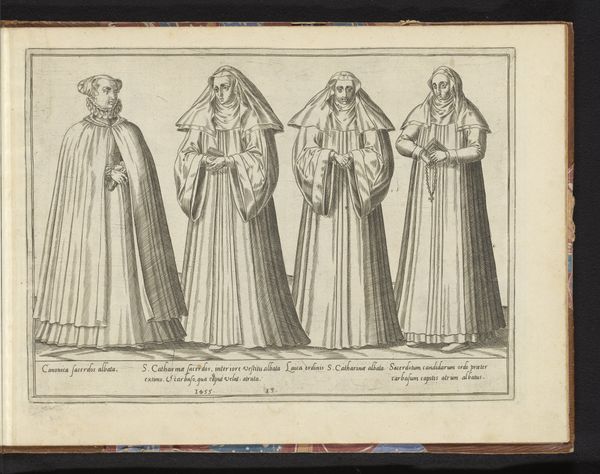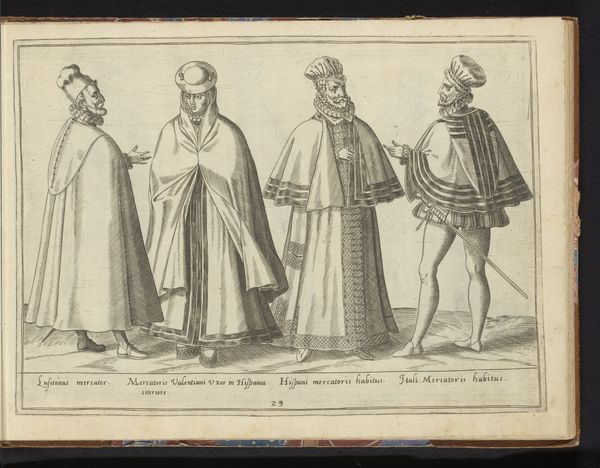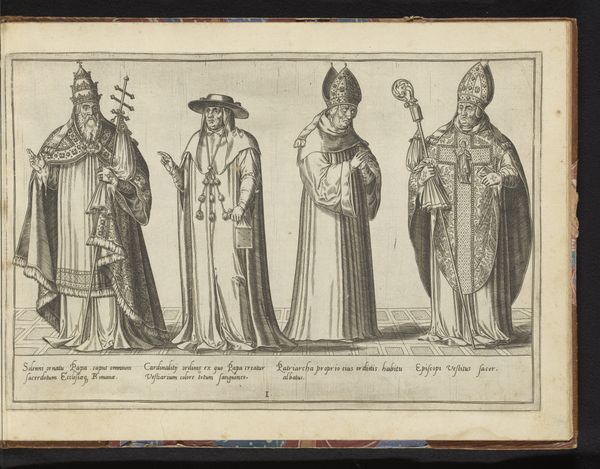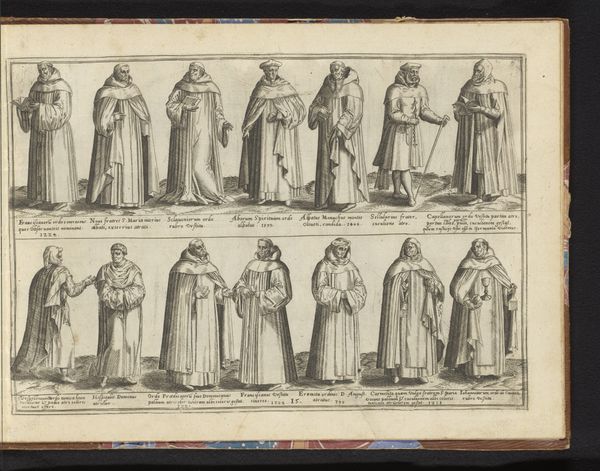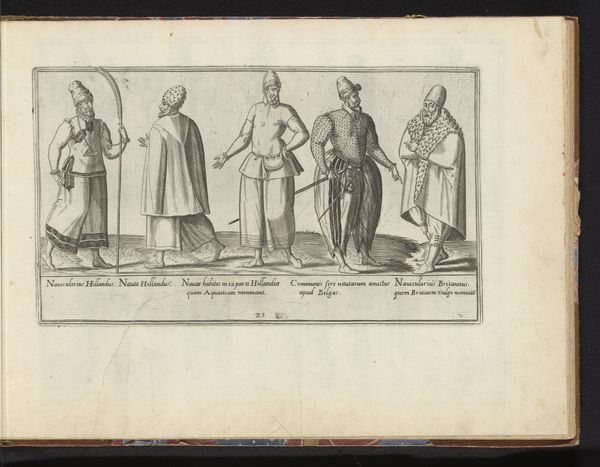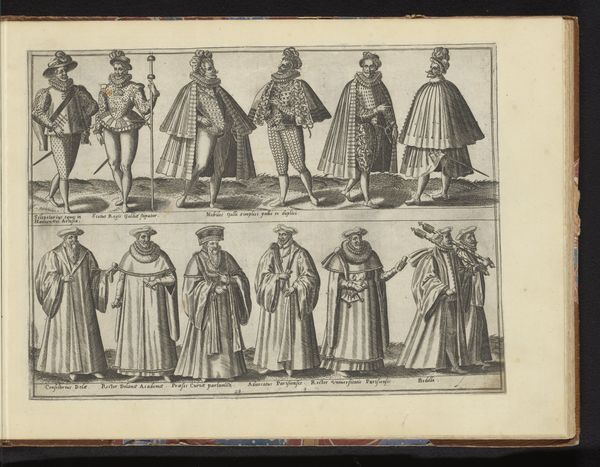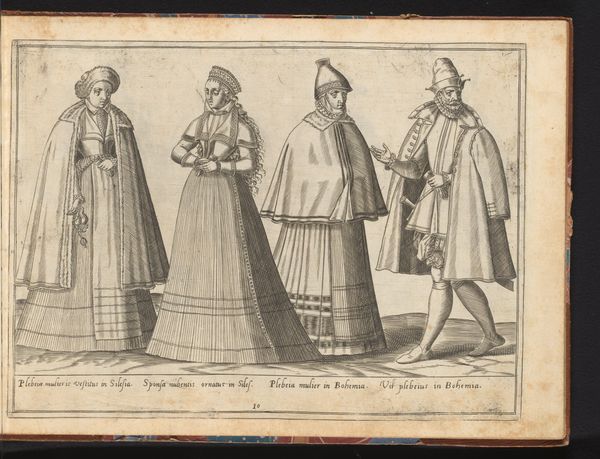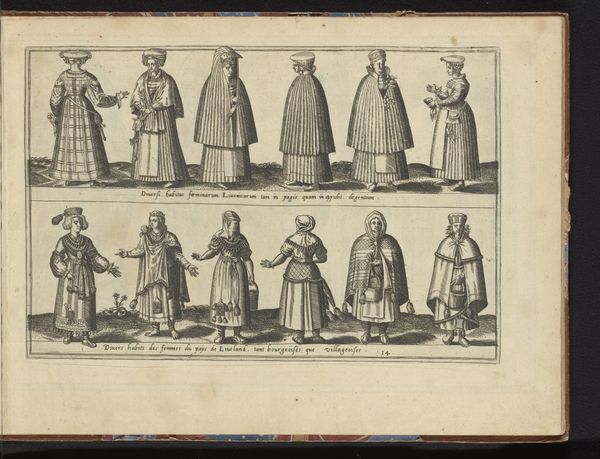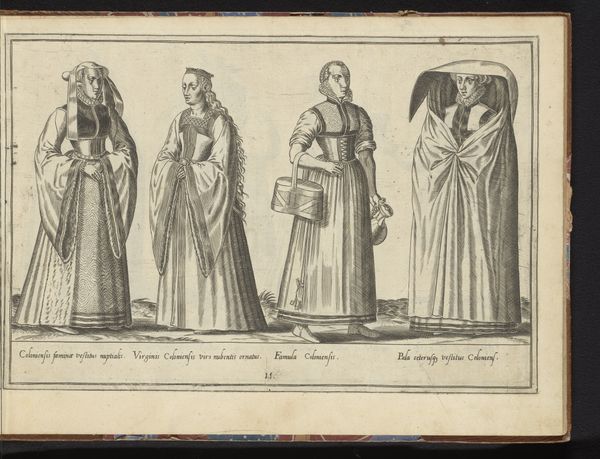
print, engraving
#
medieval
# print
#
figuration
#
coloured pencil
#
history-painting
#
engraving
Dimensions: height 265 mm, width 360 mm
Copyright: Rijks Museum: Open Domain
Editor: This is "Four Monks from Different Orders," an engraving by Abraham de Bruyn from before 1581. It's currently housed in the Rijksmuseum. I’m struck by the almost…uniformity of the robes despite the monks belonging to different orders. How can we understand this piece? Curator: The uniformity is key. I’d ask, what is the purpose of these meticulously rendered robes? It isn't just about piety. Think about the material, likely wool, its source, its cost, the labor involved in weaving, dyeing, and tailoring. Each order likely had specific regulations regarding the sourcing and creation of these garments. The clothing denotes status, affiliation, and also implies an economy, wouldn't you agree? Editor: Yes, I see that. It’s not just an image of devotion, but of production and resources. So the subtle differences in design and color then become even more significant, markers of distinction *within* this larger framework of monastic production. Curator: Precisely. The engraving itself is a form of reproduction, disseminating images of these orders. What would be the impact of the reproduction, the ease by which this can now spread? Were these engravings commissioned? By whom? To what end? And what does that mean in the broader context of 16th-century European society? Editor: It really shifts my understanding of the work. I was focused on the religious aspect, but considering the materials and their production opens up entirely new avenues for interpretation. Curator: Exactly. By looking at the labor, the cloth, and the method of reproduction, we see beyond the surface and uncover a rich history of making and meaning. The context is key here. Editor: I agree. Thinking about the printmaking process adds another layer to the meaning. Thank you! Curator: My pleasure. It’s been a fruitful conversation!
Comments
No comments
Be the first to comment and join the conversation on the ultimate creative platform.
